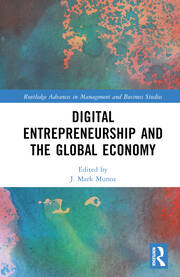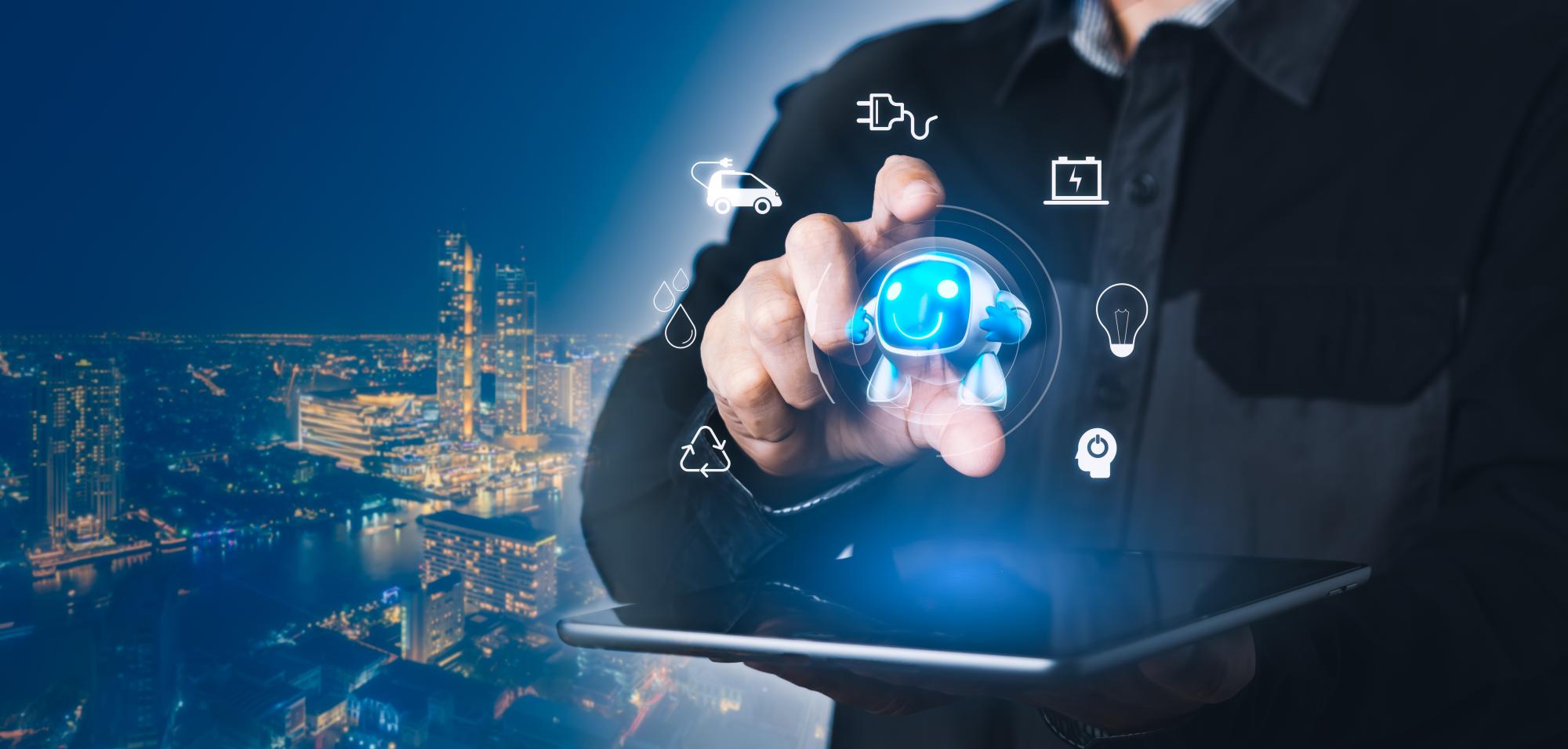
EURAXESS Worldwide takes a closer look at the nexus between innovation, industrial (r)evolution, the digital economy and, ultimately, the journey to Industry 5.0. We explore what it means for the EU’s Global Approach to research and innovation policy and developments in terms of new industrial patterns but also wider societal and environmental challenges (sustainability, ethics, impact, etc.).
The immutable relationship between innovation and entrepreneurship is long and powerful, driving fundamental developments for millennia. It works quite simply and elegantly: see a problem or gap, think of a way to fix or fill it, assemble the resources and then deliver the solution – whether a physical good, service, tool or trade.
The principles of digital entrepreneurship – making and selling ‘soft’ and intangible wares including data, information and communication technologies – have not vastly changed from those practiced by early traders supplying mostly ‘hard’ or physical wares. It is still all about the market.
According to a new book called ‘Digital Entrepreneurship and the Digital Economy’, published by Routledge and edited by J.M Munoz, the digital economy is expected to bring about some US$60 trillion in revenue by 2025. The authors note that with the rise and proliferation of emerging technologies globally, entrepreneurs have followed their native instincts and “pursued opportunities to leverage skills, abilities, and resources to find innovative revenue streams”.

Here, digital and tech giants such as Uber, Apple, Meta, ‘X’ (formerly Twitter) as well the makers of chips and digital kit like Taiwan Semiconductor Manufacturing Fujitsu, Intel, Siemens, Ericsson, etc. offer tidy examples of the importance of early mover status and how data – and the way it is handled – has emerged as the king-maker in an unchartered and enticing realm.
A growing breed of digital entrepreneurs is now found in everything from artificial intelligence, cloud computing, big data, and block chain to the ubiquitous internet of things and networked applications. These pioneers are taking innovations to market in virtual/augmented reality, gaming, media and publishing, while developing and fostering content- and digital asset-creation, as well as all manner of middleware needed to produce and deliver value across disciplines and sectors (science, education, health, aviation, energy, manufacturing, etc.).
The only real limit to these vast digital opportunities, say experts, is computing power, the regulatory environment, the imaginations of the inventors, and the foresight of entrepreneurs and their investors prepared to take a punt on new ideas.
From industrial to digital… to social
Industry has and will always be vital to both the economy and society. We need fridges, toothbrushes, shoes, seats, and everything else that helps to feed, clothe and sustain the billions of people on this planet. The rise of the digital world has done nothing to change that reality. But new digital technologies have enhanced and in many ways disrupted the way industrial processes take place.
This is the essence of Industrial Revolution (see box) which emerges as the benefits of earlier innovations pave the way for new advances in, for example, machine automation and robotics, cloud computing, and AI. Industries are also quickly learning the value of better exploiting data and digital insights to improve production efficiency and worker safety while reducing waste, labour costs, etc.
Today, we are on the cusp of what has been variously called Industry 3.0 and Industry 4.0, and experts are looking at what comes next in the journey to Industry 5.0, which is expected to leverage human, environmental and social aspects into new digital dividends. A world where innovators and entrepreneurs gain competitive advantage while still meeting stricter regulatory requirements, where flexible factories can turn out even personalised products cost-effectively and safely.
Industry 5.0 is “more than just manufacturing goods for profit”, explains Amir Adel in an article on the ‘Future of Industry 5.0 in Society’, originally appearing in Springer Nature and reproduced on PubMed Central. It revolves around sustainability, human-centricity, and resilience.
The article goes on to explore the main challenges and research lines leading to the “smart social factory” of the future. It also provides an overview (table) of research priorities and developments, supported by cases and examples. One such example is a project by Repsol, a Spanish energy company, which is using blockchain and smart robotics to build a guided-automated “cobot” capable of tasks like delivering raw materials and removing waste, while constantly feeding data on safety, efficiency, etc. back into the smart system.

Current challenges to Industry 5.0’s progress include lack of skilled workers, time-consuming processes, (data) security and privacy issues, and R&D investment. Any new solutions also need to be mindful of current and future industrial regulations concerning intelligent machines and collaborative robots.
The sheer complexity of the machinery and science supporting human-centric Industry 5.0 developments is only half of the challenge, the paper suggests. Greater investment will be needed to train managers and technicians expected to interact with these new technologies.
(Mis)understanding blockchain
As shown above, blockchain technology plays a key role in many Industry 5.0 advances. But it is often misunderstood or misrepresented. Businesses using blockchain are “able to operate in a constantly changing environment, where not only the regulatory environment, but also the attitude of industry and society towards these innovative businesses is still forming and changing”, according to a statement from Kaunus University of Technology (KUT), Lithuania in connection with the Routledge publication.
Blockchain technology is a distributed database mechanism that stores data in ‘blocks’ linked together in a ‘chain’, as its name suggests. It allows transparent information- and digital asset-sharing and back-ups within a network – private, public or in hybrid forms.
Blockchain technology is perhaps best known today for its role in cryptocurrency developments, acting as a shared digital ledger collecting and storing the trading – buy, sell, exchange – information. The linked and transparent nature of blockchain makes it a catalyst for future digital developments that need to operate globally or in complex environments relying on decentralisation.
The publicised failings of crypto should not be seen as a direct indictment on blockchain, experts say. Jurgita ButkevičienėIfrom KUT’s School of Economics and Business and co-author of a chapter on Digital entrepreneurs’ strategic responses to the incomplete global policy framework for blockchain-based business, says the problem lies more in “wilful” and “opportunistic” actions of certain players who took advantage of policy and regulatory gaps.
She and fellow researchers surveyed companies that create applications on blockchains, develop blockchain platforms, provide legal advice, and help application developers with sales and other marketing issues. They found that different regulatory approaches and “imperfections in different countries” affect these companies and their responses.
The fact that “transparent business-oriented entrepreneurs were able to successfully develop innovative and global solutions” even in unchartered territory must be seen a positive, the researchers conclude.

A case for a Global Approach to R&I
The silver lining of crypto’s fall from grace is that innovation and entrepreneurship are alive and well. Yet this narrative has focused minds on the value of building a solid understanding of the fundamentals of new or emerging technologies as the basis for good policymaking in complex and challenging fields. It also speaks to the importance of benevolent and transparent cooperation and partnerships among relevant stakeholders.
“The magnitude of current global challenges, such as the climate crisis and the COVID-19 pandemic, stresses the relevance of joining forces worldwide and pooling human and financial resources to facilitate the creation and dissemination of knowledge and innovative solutions for EU research,” explains the European Parliament’s (EP) ‘Think Tank’ in a briefing on the Global Approach to research and innovation.
Excellent, mission-oriented research and innovation feeds turnkey technologies and solutions and underpins EU policies and global sustainable development goals. Horizon Europe’s (HE) three pillars, especially those focused on tackling pressing global challenges and European industrial competitiveness (Pillar 2) and promoting greater innovation (Pillar 3), are thus a vital funding instrument for the EU’s Global Approach.
The EP’s briefing further confirms that “Europe’s openness to the world will safeguard EU strategic autonomy, interests and values” even in the face of geopolitical tensions, including the Russian invasion of Ukraine. Intensified international cooperation with like-minded partners signals Europe’s bid for better global stewardship in key fields and spanning the whole research lifecycle through to technological development and standardisation.
“European research and innovation players are unambiguously supporting international cooperation for global goods, such as knowledge, the environment and global health,” concludes the EP.
Combined with improved communication about the opportunities under HE – as competently supported and empowered by the work of EURAXESS Worldwide regional hubs – this is having a clear knock-on effect in terms of non-EU-based participation in the programme. The latest figures indicate that non-European entities are present in 42.17% of the 5,200 grant agreements signed since HE was launched in 2021.
All of this points to signs that the EU’s Global Approach and internationalisation efforts are paying dividends, and will play an instrumental role on the path to Industry 5.0 and other major digital advances.
Industrial Revolutions, past and present
The original or First Industrial Revolution is remembered as the period roughly between 1760-1840 when production went from a hand-crafted to machine-made processes, spurred on by developments in textiles, mining, engineering, iron-making – later powered by innovations in steam-powered engines. Further advances in manufacturing and production were then made thanks to the introduction of electricity, sparking industrial innovation and greater labour mobility – what would become known as the Second Industrial Revolution.
With the invention of computers and rapid emergence of information and communication technology from the late 20th century onwards, a Third Industrial/Digital Revolution (or Industry 3.0 in today’s speak) quickly captured imaginations, allowing ever-greater automation in production processes and of course giving rise to integrated circuits and the internet.
From around 2010 onwards, a Fourth Industrial Revolution started taking shape. According to experts at UpKeep, the main difference between Industry 3.0 and Industry 4.0 is the rise of interconnected technologies in plant operations thanks to progress in cloud computing and the industrial internet of things (IIoT), with additive manufacturing (3D printing) allowing rapid prototyping. The benefits of Industry 4.0 include real-time data collection, greater interoperability, and more decentralised, secure and flexible information and applications.
But where to from here? Industry watchers are already talking about the next big Industrial Revolution – building on advances in ‘cyber-physical cognitive systems’ – which they believe will orient around greater human-machine interaction in manufacturing and have clear implications on green manufacturing and the pursuit of positive socio-economic impact.
Industry 5.0 sees collaborative robots and smart machines (cobots) working alongside people, but their relationship will go beyond operational/safety objectives. TWI Global explains this: “Where Industry 4.0 focused on technologies such as the internet of things and big data, Industry 5.0 seeks to add human, environmental and social aspects back into the equation.”
This brings a whole set of new ideas and processes into business, factoring in corporate social responsibility, new investment models, global resilience, sustainability, and net-zero goals (Sustainable Development Goals and EU’s Green Deal Industrial Plan, Global Approach, and Recovery and Resilience Facility).
It also touches on global societal challenges and ethical issues covering worker rights and fair working conditions and wider declarations on universal human rights enshrined within the United Nations.
